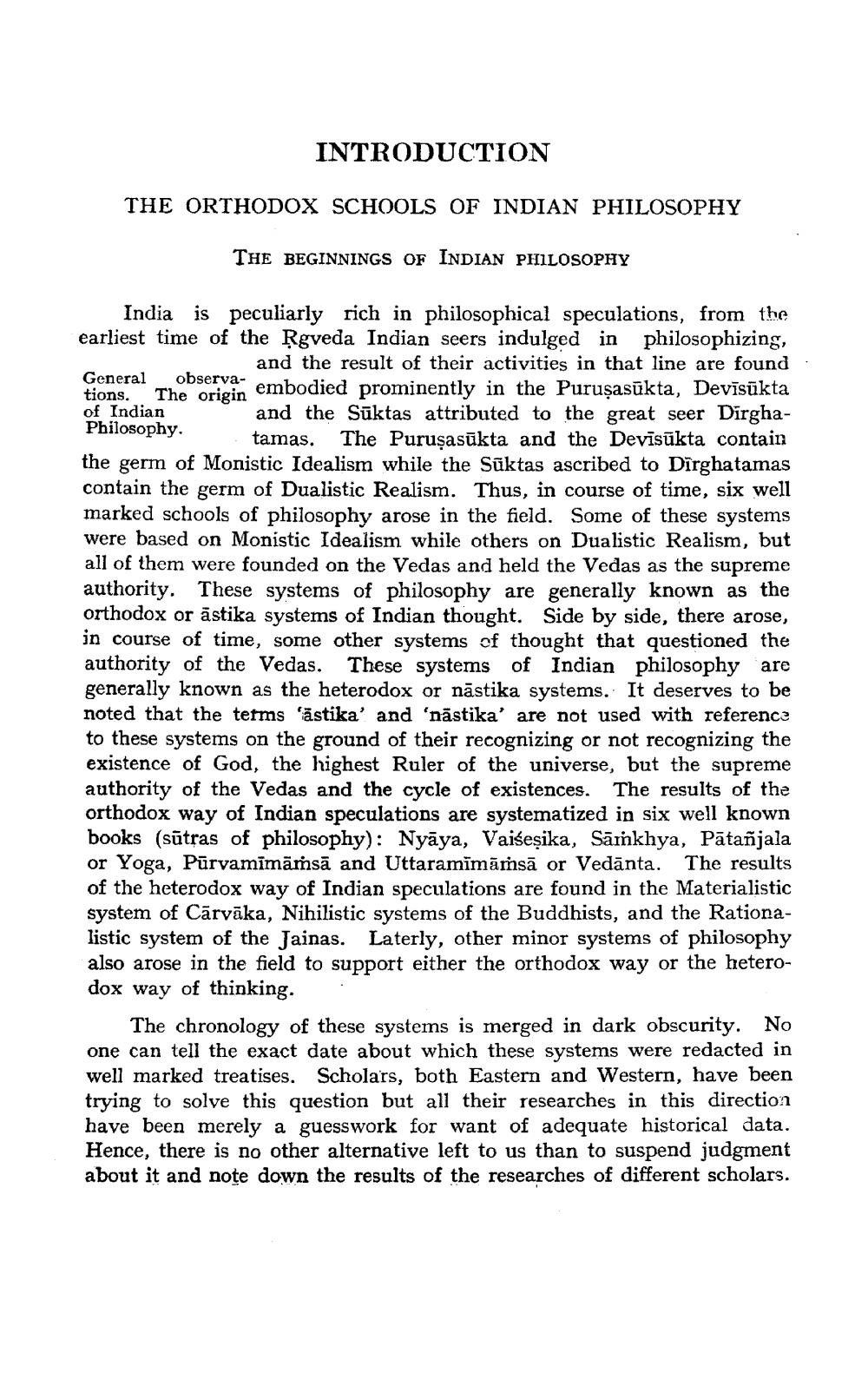________________
INTRODUCTION
THE ORTHODOX SCHOOLS OF INDIAN PHILOSOPHY
THE BEGINNINGS OF INDIAN PHILOSOPHY
Philosophy
India is peculiarly rich in philosophical speculations, from the earliest time of the Rgveda Indian seers indulged in philosophizing,
and the result of their activities in that line are found : General observations. The origine
embodied prominently in the Purusasūkta, Devīsūkta and the Sūktas attributed to the great seer Dirgha
tamas. The Purusasūkta and the Devīsākta contain the germ of Monistic Idealism while the Sūktas ascribed to Dîrghatamas contain the germ of Dualistic Realism. Thus, in course of time, six well marked schools of philosophy arose in the field. Some of these systems were based on Monistic Idealism while others on Dualistic Realism, but all of them were founded on the Vedas and held the Vedas as the supreme authority. These systems of philosophy are generally known as the orthodox or āstika systems of Indian thought. Side by side, there arose, in course of time, some other systems of thought that questioned the authority of the Vedas. These systems of Indian philosophy are generally known as the heterodox or nāstika systems. It deserves to be noted that the terms 'āstika' and 'nāstika' are not used with referenca to these systems on the ground of their recognizing or not recognizing the existence of God, the highest Ruler of the universe, but the supreme authority of the Vedas and the cycle of existences. The results of the orthodox way of Indian speculations are systematized in six well known books (sūtras of philosophy): Nyāya, Vaiseşika, Sankhya, Patañjala or Yoga, Pūrvamīmāmsā and Uttaramīmārsā or Vedānta. The results of the heterodox way of Indian speculations are found in the Mate system of Cārvāka, Nihilistic systems of the Buddhists, and the Rationalistic system of the Jainas. Laterly, other minor systems of philosophy also arose in the field to support either the orthodox way or the heterodox way of thinking. .
The chronology of these systems is merged in dark obscurity. No one can tell the exact date about which these systems were redacted in
marked treatises. Scholars, both Eastern and Western, have been trying to solve this question but all their researches in this direction have been merely a guesswork for want of adequate historical data. Hence, there is no other alternative left to us than to suspend judgment about it and note down the results of the researches of different scholars.




